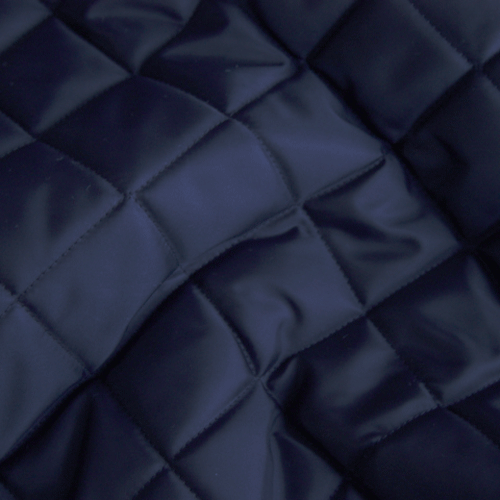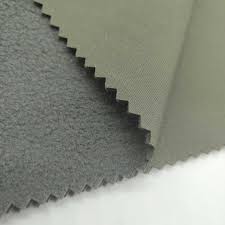Insulation Types Explained: Comparing Quilted, Fleece, Softshell & Padded Outerwear
- Gianni Romano

- Aug 5
- 4 min read

From cold warehouses to sub-zero outdoor sites, workwear insulation plays a critical role in protecting workers and maintaining productivity. But with so many insulated fabric constructions - quilted linings, fleece, softshells, padded synthetics, it’s easy for sourcing teams to get lost.
Choosing the right insulation isn’t just about warmth. It’s about balancing weight, breathability, wash performance, and layering compatibility - all within cost and compliance requirements.
This article breaks down the most common insulation types in workwear and outerwear, comparing their technical trade-offs to help brands and buyers specify smarter.
The Role of Insulation in Outerwear
Insulation works by trapping air, creating a thermal barrier between the body and the environment. But different materials and constructions trap air in different ways, with varied results in warmth retention, flexibility, and moisture management.
Unlike casualwear, insulated workwear must often meet EN 342 (cold protection), resist compression during use, and stand up to frequent industrial laundering—without restricting movement.
Key Insulation Types in Outerwear
1. Quilted Insulation (Polyfill or Fibrefill Linings)
What it is: A synthetic fill (often polyester) stitched between inner and outer layers, usually in a grid or diamond pattern.
Best for: Cold storage, general winter workwear, or midweight outerwear.
Pros:
Excellent warmth-to-weight ratio
Durable and widely available
Low-cost to produce
Compatible with shell fabrics or used as linings
Cons:
Bulky in high-fill variants
Stitching can create cold spots
May compress over time with washing/wear
Considerations: Look for channel-free quilt constructions or thermobonded fills for smoother surfaces and fewer cold spots.
2. Fleece
What it is: A brushed synthetic knit (typically polyester) known for its soft handfeel and breathable warmth.
Best for: Mid-layers, indoor/outdoor transitional wear, or garments needing stretch.
Pros:
Lightweight and breathable
Retains warmth when damp
Easy to wash and fast-drying
No fill migration
Cons:
Poor wind resistance unless laminated
Pilling after repeated wash cycles
Lower thermal efficiency than insulated fill per gram
Considerations: Use anti-pill or recycled fleece options. Fleece is great for modular systems (e.g. zip-in liners or hybrid layering).
3. Softshell with Bonded Fleece or Microfleece Backing
What it is: A multi-layered fabric with a smooth outer surface, breathable membrane (optional), and inner fleece layer.
Best for: Mild to moderately cold conditions, layered garments with movement requirements.
Pros:
Wind-resistant and water-repellent (DWR-treated)
Sleek appearance; no quilting needed
Often includes stretch
Breathable and washable
Cons:
Less insulation than thick quilted garments
DWR may degrade over time
May not meet EN 342 on its own
Considerations: Ideal for active outdoor roles or as part of a layered PPE system. Add external shell or liner if needed for extreme cold.
4. Padded Insulation (Thermal Foams or Sheet Liners)
What it is: Flat insulation sheets made from synthetic microfibres, often laminated or bonded inside outerwear layers (e.g. Thinsulate™, Climashield®, etc.)
Best for: Lightweight outerwear, tactical wear, or garments requiring high warmth with low profile.
Pros:
High-performance warmth in minimal bulk
Good compression resistance
Uniform insulation (no stitching required)
Many options meet EN standards
Cons:
Can be expensive
Needs expert construction to avoid moisture trap
Not always easy to repair or recycle
Considerations: These are ideal when mobility + warmth is critical (e.g. fieldwork, logistics, patrol). Match insulation weight (gsm) to expected temperature exposure.
How to Choose the Right Insulation Type
Sourcing the right insulation means balancing competing priorities:
Performance Priority | Top Choice | Why It Works |
Warmth-to-Weight | Synthetic padding (e.g. Thinsulate™) | Delivers high thermal performance without bulk—ideal for lightweight warmth. |
Cost-Effectiveness | Quilted polyester fill | Affordable and versatile, especially for basic cold-weather uniforms. |
Breathability | Fleece | Allows airflow while offering core warmth—great for layering or active roles. |
Industrial Wash Durability | Fleece or quilted polyfill | Withstands repeated washing with minimal loss of loft or shape. |
Stretch & Freedom of Movement | Bonded softshell with insulation | Offers flexibility and thermal regulation in dynamic work settings. |
Sleek, Bulk-Free Fit | Softshell or laminated insulation | Maintains a clean silhouette—ideal for layering. |
Cold Climate Certification (EN 342) | Mid- to high-GSM quilted or padded fill | Provides required insulation levels for certified protection in sub-zero work zones. |
Tip: Where possible, test insulated prototypes under actual working conditions. Warmth can vary drastically depending on wind exposure, activity level, and garment layering.
Sustainability Considerations
Insulation can be a barrier to recyclability when it complicates mono-material construction. However, better options are emerging:
Recycled polyester insulation (e.g. from rPET bottles) is now widely available
Biodegradable polyester fills are in early market stages
Natural fills (e.g. TENCEL™-based insulation) are gaining attention for softness, and biodegradability. Not as thermally efficient as synthetics, but performs well in lifestyle and light-duty workwear.
Designing for disassembly can improve recycling of insulated garments
Fleece made from recycled yarns offers closed-loop potential
Workwear brands looking to reduce impact should focus on:
Insulation made from certified recycled content
Products that balance durability and thermal performance to minimise replacements
How Lyfcycle Can Help
At Lyfcycle, we help brands match insulation performance with real-world usage, compliance needs, and sustainability targets. Whether you’re sourcing bulk polyfill jackets or premium hybrid outerwear, we guide you through fabric selection, EN 342 testing, and supplier benchmarking.
We also support circular design reviews, helping you create garments that don’t just protect workers—they protect the planet too.
If you’re building a new insulated range and need support on specs, sourcing, or sustainability—get in touch.
Editor’s Note:
ISO 11092: Thermal Resistance (Rct) Measurement
EN 342:2017 – Protective Clothing Against Cold
OEKO-TEX®: Certification for Recycled and Safe Insulation
3M Thinsulate™, Climashield®, Primaloft®: Comparative Data Sheets
Textile Exchange: Recycled Polyester Market Report








شيخ روحاني
شيخ روحاني
رقم شيخ روحاني
شيخ روحاني لجلب الحبيب
الشيخ الروحاني
الشيخ الروحاني
شيخ روحاني سعودي
رقم شيخ روحاني
شيخ روحاني مضمون
Berlinintim
Berlin Intim
جلب الحبيب
سكس العرب
https://www.eljnoub.com/
https://hurenberlin.com/
جلب الحبيب بالشمعة
A well-made Cowboy Jacket is an investment in both style and functionality. It's a piece that gets better with age and tells your own story of adventure. For jackets built to last, the Western Jacket homepage is the place to shop.
Western fans admire the tough style of the Rip Wheeler Black Jacket, a must-have for Yellowstone-inspired wardrobes. Perfectly versatile, it’s part of the official Rip Wheeler Outfit range.